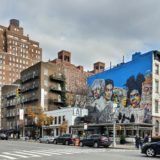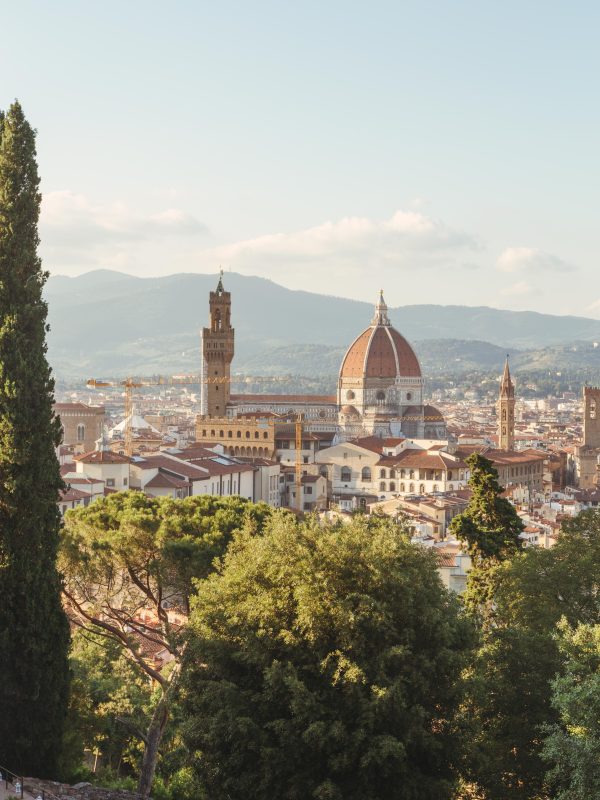Berlin is a strange city. If cities were people, Paris would be an old elegant lady and London a beautiful princess. Berlin, on the other hand, would likely be a young girl, not exceptionally beautiful but very charming and stylish. Berlin has that unique vibe that I only find in younger countries, in East Europe or Asia for example. You can feel the history that lies behind the older buildings, but at the same time you feel a different energy, a younger and vibrant one that comes from their recent history.
Berlin has all this. The recent history of the city is one of revolutions and growth, suffering and rebirth. Yet, in the same city, you can still clearly see the grandeur of its past, the wounds of the wars and the richness that comes from such a long history.
When it comes to contemporary art, Berlin is probably the capital city of Europe. Germany has a long story and a particular interest in contemporary art. As a country, Germany itself boasts an enormous number of museums and kunsthalle, galleries and foundations and everything in between. Berlin is no different. The offer here is amazing, the whole city is a workshop of innovation and culture, not just for contemporary art but for every artistic expression possible.
Here you can find museums and galleries, theaters, opera, classical music, ballet, but also world-famous clubs and alternative music venues, not to mention the rich and diverse food scene that immigrants and Germans alike brought to the city.
To narrow down the offer, here are my go-to places for contemporary art in Berlin.
Hamburger Bahnhof – Museum für Gegenwart
The one and only, I would say. The Hamburger Bahnhof is probably the first contemporary art museum I visited on my own at a very young age, during a trip to Berlin with my parents. I must have been 15 or 16, my family and I were on vacation in Germany and while in Berlin I decided I wanted to visit the museum. Now, my family loves art, but they are more into Renaissance and classical art, so when I said I would go there on my own it made perfect sense for my parents. They dropped me there and gave me enough time to visit the exhibitions on my own. They probably enjoyed a well-deserved beer in a park nearby before coming back to pick me up after a while. I remembered I felt so happy, independent, and fulfilled by my solitary visit!
Apart from the “emotional” bond I have with the museum, it is honestly one of the best museums I have ever visited. Hosted in a former train station, the museum is one of the five buildings that form and showcase the Nationalgalerie’s collection. Opened in 1996, it stores one of the largest and most significant public collections of contemporary art in the world.
It is worth a visit for the amazing collection of artworks by Joseph Beuys as well as for the high-quality temporary exhibitions they host every year.
Hamburger Bahnhof – Museum für Gegenwart
Invalidenstraße 50-51, 10557 Berlin, Germany
Open Tuesday through Sunday, 10 – 18
Tickets 4€ – 14€
KW Institute for Contemporary Art
Located in the Mitte, KW Institute for Contemporary Art occupies a former margarine factory that dates back to the 1870s. It was first opened in the early 1990s and over the years it expanded to reached 2.000 square meters of exhibition space distributed over five floors.
It is an impressive space, with a beautiful courtyard that sits in between its wings, and the nice Café Bravo, designed by American artist Dan Graham. KW Institute does not have a permanent collection, so its program revolves around temporary exhibitions. They focus on a number of different subjects, aiming at discussing the most urgent themes of our contemporaneity. Through a series of international collaborations and thanks to the commission of works, the KW Institute has become over the years one of the most important actors for contemporary art in Germany and internationally.
It is also one of the sites for the Berlin Biennale of Contemporary Art, one of the major art biennales in the world, and one of the factors that helped Berlin become the capital of European contemporary art.
KW Institute for Contemporary Art
Auguststraße 69, 10117 Berlin, Germany
Open daily, 11 – 19 – Closed on Tuesday
Tickets 6€ – 8€
KINDL – Zentrum für zeitgenössische Kunst
The KINDL Center for Contemporary Art is everything I love about art spaces. Located in Neukölln, it first opened its doors in 2016 and since then it has become one of the major contemporary art attractions in Berlin.
Hosted in a former industrial building, the Kindl Brewery, a 1920s Brick Expressionism building, KINDL develops over three floors and a giant, impressive hall for site-specific installation, the so-called Kesselhaus. It also houses an amazing cafe, placed among the original enormous copper kettles once used to brew beer. The program is a mix of monographic retrospectives and thematic group exhibitions, paired with a number of events such as artist talks, lectures and concerts.
I love this place, it has a unique vibe and a very charming look. It almost feels like a neighborhood art center, but in fact, the exhibitions are of top quality and they have worked over the years with some of the best international artists around. Nonetheless, if you sit at the cafe you feel like home, sipping coffee and reading one of the books and magazines they provide.
Most of all, what I love about KINDL is the Kesselhaus. The 20 meters high hall is primarily used for site-specific installations, that leave every visitor in awe. The hall has giant windows and amazing natural light, its walls are not perfectly white and smooth, but its history and its roughness make it the ultimate Berlin place to visit.
KINDL – Zentrum für zeitgenössische Kunst
Königin-Luise-Straße 35, 14195 Berlin, Germany
Open Wednesday through Sunday, 12 – 19
Tickets 3€ – 5€
Boros Foundation
Last but not least, the Boros Foundation is a gem hidden in plain sight. As you might have noticed by now, Berlin is all about reconverting buildings into contemporary art spaces and the Boros Foundation is following the trend. Located in the Mitte area, it is hosted in the Reichsbahnbunker, a former 1942 bunker, build as an air-raid shelter for the civilian population during WWII. It is a massive concrete building, with thick walls and tiny windows. Over the years it served as a bunker, prison, tropical fruit storage, and in the 1990s as a hardcore techno club until its final closure in 1996.
In 2003 Christian Boros acquired the bunker for his private collection, renovated it, and build a glass-walled penthouse on the roof for him and his wife. Together they are one of the most influential collectors couples of our times and their collection is now hosted and exhibited in the bunker. The collection comprises works by international artists dating from 1990 to the present, on display in the bunker rooms on rotation. The first exhibition opened in 2008 and so far they have hosted 3 different exhibitions. Each exhibition remains on view for approximately four years, as it is not easy to move pieces around the small corridors and doors of the bunker. The last exhibition Boros Collection/ Bunker Berlin #3 opened in 2017 and presents recently acquired works as well as pieces from the 1990s and 2000s.
The collection can only be visited via one of their guided tours offered both in English and German. Book well in advance, as tours are meant for small groups and they sell out quickly.
Boros Foundation
Reinhardtstraße 20, 10117 Berlin, Germany
Open Thursday through Sunday, by appointment
Tickets 10€ – 18€























Get in touch